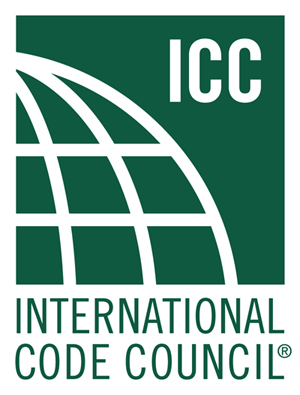Your cart is currently empty!
“Mastering the IRC: Comprehensive Guide to Building Codes”

The International Residential Code (IRC) serves as a comprehensive guide to building regulations for one- and two-family dwellings and townhouses. Developed by the International Code Council (ICC), the IRC is a critical resource for architects, builders, contractors, and homeowners who seek to ensure that their construction projects meet the highest standards of safety and quality. This article aims to demystify the IRC by breaking down its basics, key components, impact on residential construction, and the steps for navigating compliance and inspections. For further detailed guidance, visit ibc-manual.com.
Understanding the Basics of the International Residential Code
The International Residential Code (IRC) is a model building code that provides minimum regulations for one- and two-family dwellings and townhouses up to three stories in height. The IRC is updated every three years to reflect the latest advances in building technology and safety standards. Its primary objective is to safeguard public health, safety, and general welfare as they relate to the construction and occupancy of buildings and structures.
The IRC covers a wide range of topics, including building, plumbing, mechanical, fuel gas, energy, and electrical provisions. It is designed to be comprehensive yet flexible enough to accommodate various construction methods and materials. The code is adopted at the state or local level, meaning that while the IRC serves as a model, the specific requirements can vary depending on the jurisdiction.
One of the fundamental principles of the IRC is to provide a prescriptive-based approach to construction. This means that the code specifies the exact materials, methods, and practices that should be used to meet its requirements. This approach simplifies the construction process, making it easier for builders to understand and comply with the regulations.
The IRC is divided into chapters that address specific aspects of construction, such as foundations, framing, roofing, and electrical systems. Each chapter provides detailed requirements and guidelines to ensure that every component of a residential building meets the necessary standards. For those looking for more in-depth explanations and examples, resources like ibc-manual.com can be invaluable.
Understanding the basics of the IRC is crucial for anyone involved in residential construction. It not only helps ensure that buildings are safe and habitable but also helps avoid costly mistakes and delays that can arise from non-compliance. By familiarizing oneself with the IRC, builders can streamline their projects and improve the overall quality and safety of their work.
In summary, the International Residential Code is a vital tool for ensuring that residential buildings meet essential safety and quality standards. Its prescriptive-based approach and comprehensive coverage make it an indispensable resource for anyone involved in the construction industry. For more detailed information and practical guidance, consider exploring ibc-manual.com.
Key Components and Structure of the IRC
The IRC is meticulously organized into chapters, each focusing on a specific aspect of residential construction. This structured approach makes it easier for builders and inspectors to find the information they need quickly. The code begins with administrative provisions, which set the groundwork for how the code should be applied, interpreted, and enforced.
Chapter 1 of the IRC outlines the scope and administration of the code, including definitions and general requirements. This chapter is essential for understanding how the code is to be used and the legal framework that supports its enforcement. It also details the responsibilities of the building official, who is tasked with ensuring compliance with the code.
Subsequent chapters delve into specific technical requirements. For example, Chapter 3 addresses building planning, covering topics such as room sizes, ceiling heights, and light and ventilation requirements. This chapter ensures that residential buildings provide a comfortable and healthy living environment for occupants.
Chapters 4 through 10 focus on different structural components of a building, including foundations, floors, walls, roofs, and chimneys. Each chapter provides detailed construction requirements and guidelines to ensure that these components are built to withstand various loads and environmental conditions. For instance, Chapter 6 on wall construction includes specifications for wood, masonry, and steel wall systems.
The IRC also includes chapters on mechanical, plumbing, and electrical systems, which are critical for the functionality and safety of a residential building. These chapters provide guidelines for the installation and maintenance of heating, ventilation, air conditioning, plumbing fixtures, and electrical wiring. Compliance with these chapters ensures that the building’s systems operate efficiently and safely.
Energy efficiency is another key component of the IRC, addressed in Chapter 11. This chapter includes requirements for insulation, windows, and heating and cooling systems to ensure that residential buildings are energy-efficient and environmentally friendly. By adhering to these standards, builders can help reduce energy consumption and lower utility costs for homeowners.
In conclusion, the IRC’s structured approach and comprehensive coverage make it an invaluable resource for anyone involved in residential construction. Each chapter provides detailed requirements and guidelines that help ensure the safety, functionality, and efficiency of residential buildings. For further detailed guidance and examples, visit ibc-manual.com.
How the IRC Impacts Residential Construction
The International Residential Code (IRC) significantly impacts residential construction by establishing a standardized set of regulations that builders must follow. This standardization helps ensure that all residential buildings meet minimum safety and quality standards, regardless of where they are built. By adhering to the IRC, builders can help protect the health and safety of occupants and the general public.
One of the primary ways the IRC impacts residential construction is by providing clear and specific guidelines for various construction practices. This prescriptive approach simplifies the construction process and helps builders avoid common mistakes. For example, the IRC provides detailed requirements for framing, roofing, and insulation, ensuring that these critical components are built correctly and safely.
The IRC also plays a crucial role in ensuring the structural integrity of residential buildings. By specifying the materials and methods that should be used for foundations, walls, and roofs, the IRC helps ensure that buildings can withstand various loads and environmental conditions. This is particularly important in areas prone to natural disasters such as earthquakes, hurricanes, and floods.
In addition to structural integrity, the IRC also addresses the functionality and efficiency of residential buildings. Chapters on mechanical, plumbing, and electrical systems provide guidelines for the installation and maintenance of these critical systems. By adhering to these guidelines, builders can help ensure that residential buildings are comfortable, functional, and safe for occupants.
Energy efficiency is another key area where the IRC impacts residential construction. The code includes requirements for insulation, windows, and heating and cooling systems to ensure that residential buildings are energy-efficient and environmentally friendly. This not only helps reduce energy consumption and lower utility costs for homeowners but also contributes to environmental sustainability.
In summary, the IRC has a profound impact on residential construction by providing a standardized set of regulations that help ensure the safety, functionality, and efficiency of residential buildings. By adhering to the IRC, builders can help protect the health and safety of occupants and the general public, while also contributing to environmental sustainability. For more detailed information and practical guidance, visit ibc-manual.com.
Navigating Compliance and Inspections with the IRC
Compliance with the International Residential Code (IRC) is a critical aspect of residential construction. Ensuring that a building project meets the IRC’s requirements involves several steps, including planning, permitting, construction, and inspections. Navigating these steps can be challenging, but understanding the process can help builders and homeowners achieve compliance more efficiently.
The first step in navigating compliance with the IRC is understanding the specific requirements that apply to your project. This involves reviewing the relevant chapters of the IRC and any additional local amendments or regulations. Resources like ibc-manual.com can provide valuable guidance and examples to help you understand the requirements and how to apply them to your project.
Once you understand the requirements, the next step is to obtain the necessary permits. This typically involves submitting detailed plans and specifications to the local building department for review. The building official will review the plans to ensure they comply with the IRC and any local regulations. This step is crucial for identifying and addressing any potential issues before construction begins.
During construction, it is essential to follow the approved plans and specifications closely. This helps ensure that the building meets the IRC’s requirements and reduces the risk of non-compliance. Regular inspections by the building official are also a critical part of the process. These inspections verify that the work is being done according to the approved plans and the IRC’s requirements.
If any issues are identified during inspections, they must be addressed promptly. This may involve making corrections to the work or providing additional documentation to demonstrate compliance. Working closely with the building official and maintaining open communication can help resolve any issues quickly and efficiently.
Finally, once construction is complete, a final inspection is conducted to ensure that the building meets all the IRC’s requirements. If the building passes the final inspection, a certificate of occupancy is issued, allowing the building to be legally occupied. This certificate is a critical document that verifies the building’s compliance with the IRC and local regulations.
In conclusion, navigating compliance and inspections with the IRC involves several critical steps, from understanding the requirements and obtaining permits to following approved plans and passing inspections. By following these steps and working closely with the building official, builders and homeowners can help ensure that their projects meet the IRC’s requirements and are safe, functional, and efficient. For more detailed information and practical guidance, visit ibc-manual.com.
The International Residential Code (IRC) is an indispensable resource for anyone involved in residential construction. By providing a standardized set of regulations, the IRC helps ensure that residential buildings are safe, functional, and efficient. Understanding the basics of the IRC, its key components, and its impact on residential construction can help builders and homeowners navigate the complexities of compliance and inspections more effectively. For further detailed guidance and practical examples, consider exploring ibc-manual.com.
